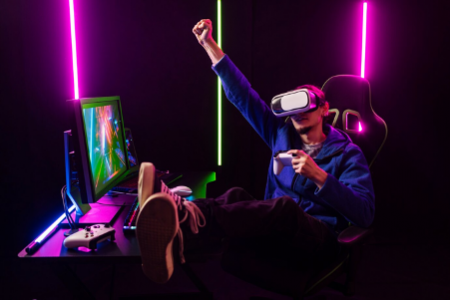Game-Changing Adventures: A Dive into the Exciting World of Web3 Gaming

The landscape of gaming is undergoing a revolutionary transformation with the emergence of Web3 technology. Web3 gaming represents a paradigm shift, offering players unprecedented ownership of in-game assets, decentralized economies, and a more immersive gaming experience.
Understanding Web3 Gaming
Web3 gaming is built on blockchain technology, the decentralized and transparent ledger system that underlies cryptocurrencies like Bitcoin and Ethereum. Blockchain provides a secure and transparent way to verify ownership of digital assets, enabling players to truly own their in-game items. This is a stark departure from traditional gaming models, where players may invest time and money into virtual items that are ultimately controlled by game developers.
Web3 gaming leverages smart contracts, which are self-executing contracts with the terms of the agreement directly written into code on the trusted platform. This allows for trustless transactions and facilitates the creation of decentralized in-game economies. On Chainers, players can trade, buy, and sell in-game assets with a level of security and transparency that was previously unattainable.
The Rise of Player-Owned Economies
One of the most significant aspects of Web3 gaming is the empowerment of players through ownership of in-game assets. Traditionally, players may spend real money on virtual items, but they have limited control over these items outside the game environment. With Web3, players have true ownership facilitated by blockchain technology.
NFTs and In-Game Assets
Non-fungible tokens (NFTs) play a crucial role in Web3 gaming by representing ownership of unique in-game assets. These assets can range from rare weapons and skins to virtual real estate. NFTs are stored on the blockchain, ensuring that their scarcity and uniqueness are verifiable. This has opened up new possibilities for players to buy, sell, and trade in-game items with real-world value.
- Interoperability Across Games
Web3 gaming promotes interoperability, allowing players to use their NFTs across multiple games. A rare sword obtained in one game could become a powerful tool in another, fostering a dynamic and interconnected gaming ecosystem. This creates a novel gaming experience where players can build valuable collections that transcend individual game boundaries.
- Unique Experiences Across Games
Players can enjoy diverse and unique gaming experiences by using their NFTs across different games. The interoperability of assets introduces a novel dimension where players can apply their acquired items creatively, enhancing gameplay in various virtual worlds.
Decentralized Governance and Community Involvement
Web3 gaming introduces decentralized governance models, shifting decision-making power from centralized entities to the gaming community. Players can actively participate in the development and evolution of the game, influencing decisions on updates, features, and even the in-game economy.
Community-Led Development
Decentralized autonomous organizations (DAOs) are at the forefront of community-led development in Web3 gaming. DAOs enable players to vote on proposals and changes to the game, creating a democratic decision-making process. This level of community involvement fosters a sense of ownership and engagement among players, making them an integral part of the gaming ecosystem.
- Token-Based Voting
Many Web3 games utilize tokens to facilitate voting within DAOs. Players can acquire these tokens through various in-game activities or by participating in the game’s community. Token-based voting ensures that those who are actively contributing to the game have a greater say in its direction, aligning the interests of the community with the success of the game.
- Inclusive Decision-Making
Token-based voting ensures that decisions about the game are made by those actively invested in its success. This inclusive decision-making process fosters a sense of belonging among players, as they have a direct impact on the game’s direction and features.
Enhanced Security and Anti-Cheating Measures
Web3 gaming incorporates enhanced security features, reducing the prevalence of cheating and fraudulent activities that plague traditional gaming environments.
Cheating Prevention Through Blockchain
By leveraging blockchain technology, Web3 games can implement cheat-proof mechanisms. In traditional games, cheating often involves manipulating centralized servers or game files. In Web3 gaming, the decentralized nature of blockchain makes it significantly more difficult for players to exploit the system, enhancing the integrity of the gaming experience.
- Transparent and Tamper-Proof Records
Blockchain maintains transparent and tamper-proof records of in-game transactions and achievements. This not only ensures the authenticity of a player’s progress but also provides a verifiable history of in-game activities. Cheaters find it challenging to manipulate these records, creating a fair and secure environment for all players.
- Elevated Trust and Fair Play
The transparent and tamper-proof nature of blockchain records elevates trust among players. Knowing that the system is resistant to manipulation ensures a fair play environment, enhancing the overall gaming experience for all participants.
End Note
Web3 gaming is ushering in a new era of player empowerment, decentralized economies, and community-driven development. The integration of blockchain, NFTs, and decentralized governance is reshaping the gaming landscape, offering players a level of ownership and engagement that was previously unimaginable. As we embark on these game-changing adventures, the future of gaming looks more exciting, transparent, and inclusive than ever before.




